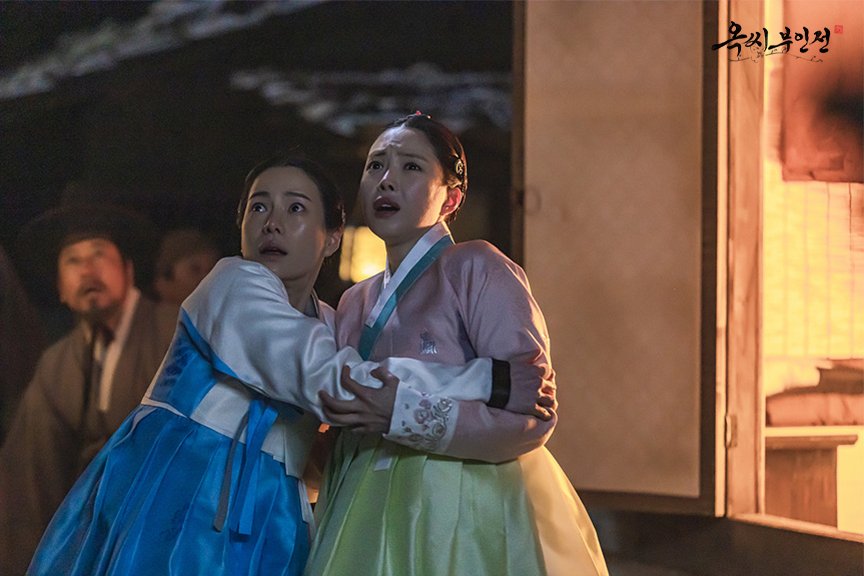At QIW, we cover reviews of dramas and movies. Personally, I’m one of the many viewers who enjoy watching international series from platforms like Netflix, including those from the US, UK, and Spain. The more I immerse myself in these stories, the more questions arise—why do characters act the way they do? Cultural differences and behavioral norms often hold the answers. I’ve long wished for a place that explains such aspects, making the viewing experience even richer.
For this reason, I thought it might be exciting to talk about K-dramas, which are rooted in Korean culture, familiar to me. Understanding the background and unique Korean elements—like cultural settings and habits—can add to the enjoyment. I hope to provide a small but meaningful contribution to that understanding.
One note: This post may contain spoilers. Also, keep in mind that this is the highly personal perspective of a single viewer, and differences in interpretation are natural.

Tale of Lady Ok: A Story from the Joseon Dynasty
In this post, I’ll cover Tale of Lady Ok(옥씨부인전), a K-drama that premiered on November 30 on JTBC. This virtual historical drama follows the fictional journey of Ok Tae-young, who starts life as Gu Deok-i, a slave, but later becomes a noblewoman in a prestigious family.
One of the charms of historical dramas lies in how they answer our curiosity about the past—how people lived, what they wore, what they ate, and what dreams they held centuries ago.
Unlike traditional historical dramas, which are based on real events or figures, Lady Ok’s Tale ventures into a fictional world. However, understanding its historical backdrop can enhance the viewing experience.

Setting: Joseon Dynasty, 1600s
The story is set in the late Joseon Dynasty, roughly the early-to-mid 1600s. References to The Tale of Hong Gil-dong appear, a fictional story written by Heo Gyun, a government official of the Joseon era. Every Korean is familiar with the tale, as it is taught in schools and has inspired countless adaptations across books, dramas, and films.
Quick Facts: The Tale of Hong Gil-dong(홍길동전)
Hong Gil-dong means “The Story of Gil-dong Hong.” The suffix “jeon” signifies a tale handed down. Although Heo Gyun wrote it, he likely chose anonymity due to the story’s criticism of social norms at the time. The tale revolves around Hong Gil-dong, the illegitimate son of a nobleman. In a society with a strict caste system, illegitimate children couldn’t even address their fathers as “Father.” Resentful of these injustices, Gil-dong becomes the leader of a group of outlaws, taking wealth from the corrupt to help the poor—a narrative reminiscent of Robin Hood. His status as an illegitimate son also draws parallels to Jon Snow from Game of Thrones.
In Lady Ok’s Tale, we also see the linguistic divide between nobles, who use Chinese characters, and commoners, who use Hangul. Though Hangul was invented in the early Joseon period, it wasn’t widely accepted until much later. Nobles often clung to Chinese characters, reflecting the social hierarchy of the time.
Gu Deok-i: The Slave
The protagonist, Gu Deok-i, begins life as a nobi (a class akin to slaves). However, unlike slaves in other societies, nobi could own property and were rarely bought or sold. Historians often describe them as the lowest social class rather than mere “property.” While they were sometimes mistreated or even killed without consequences, most nobility viewed such acts as cruel and unbecoming, rather than the norm.
To heighten drama, the show depicts nobles belittling and mistreating nobi, including using phrases like “like dogs and pigs.” While this reflects some historical cases, it doesn’t represent the general treatment of nobi.

Plot Highlights from Episode 1
The title, Tale of Lady Ok, might initially seem puzzling since the protagonist is introduced as Gu Deok-i, a slave. However, we soon meet Ok Dae-gam (a nobleman) and his daughter, Ok Tae-young. Through a twist of fate, Gu Deok-i, despised for her lowly name, becomes the adopted daughter of Ok Tae-young, a kind and noble woman.
Tragically, during a bandit attack, both Ok Dae-gam and Ok Tae-young are killed, leaving Gu Deok-i as the sole survivor. Waking up in Ok Dae-gam’s family home, she finds herself mistaken for Ok Tae-young by Lady Han, Tae-young’s grandmother. Gu Deok-i initially reveals the truth and plans to leave, but Lady Han commands her to stay and live as Tae-young.
As the story progresses, Gu Deok-i, now living as Ok Tae-young, begins to excel—displaying intelligence and grace. She decides to honor Tae-young’s dream of becoming an oegibu (a type of legal advocate in Joseon society). The drama appears to promise a tale of self-reinvention, romance with Seo-in, an illegitimate nobleman, and a blend of law, romance, and historical intrigue.
How will this virtual historical drama unfold? With its unique mix of romance, legal drama, and life in the Joseon era, Tale of Lady Ok is sure to captivate viewers. Stay tuned for the journey!


